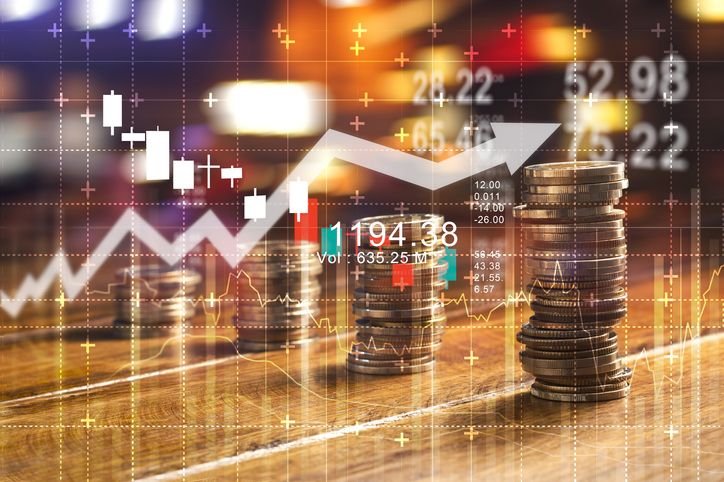The ongoing active and passive debate has not deterred European fund selectors from allocating to index-tracking funds as their popularity has been on the rise since Q1 2018, according to data.
Last Word Research found the popularity of asset class has been on an upward trajectory for a year and is currently the 10th most popular asset class (out of 26) for continental European fund buyers.
During Q1 2019, 20% of selectors looked to increase their allocation over the 12 months to March 2020, 44% to hold, 4% to decrease, and 32% did not use the asset class.
[visualizer id=”9509″]
Source: Last Word Research
The research also found that Belgian, Portuguese, and Spanish selectors were the keenest on the asset class, whereas the Germans were not.
According Morningstar, European-domiciled ETF assets under management (AUM) have doubled over the past five years to €760bn by March 2019.
Its latest research said: “ETFs account for 8.6% of total AUM in European investment funds, up from 5.5% five years earlier”.
It noted the sector could hit €2trn in assets by 2024 on the back of favourable regulatory changes, innovation, and the “increasing acknowledgment of the long term benefits of low-cost investing”.
Morningstar data found that ETFs domiciled in either Luxembourg or Ireland had inflows of €74.5bn over the year to 31 March 2019. During the year the only month that had outflows was June 2018 with a loss of €435.1m. February enjoyed the largest inflows at €17.8bn.
[visualizer id=”9513″]
Source: Morningstar. Funds domiciled in either Luxembourg or Ireland
European fixed income ETFs had the highest inflows at €3.01bn in March, and European equity large cap ETFs had the largest outflows of €1.9bn.
Easy negotiations
Solutions Capital Management (SCM) investment manager, Laura Rampoldi, said she was looking to increase her ETF allocation because it was easier to buy and negotiate ETFs compared to traditional funds.
The Milan-based fund buyer said buying ETFs was easier as it followed the open and close of the market but traditional funds had their own mandate on when you could buy the fund.
“Depending on the mandate it could take three to five days to settle [for a traditional fund] so it’s difficult to manage cash,” Rampoldi said.
“Negotiations when buying ETFs are also easier if you understand futures and the liquidity of an ETF.”
Rampoldi said she was looking at increasing her ETF allocation on the bond side as it was difficult to find new and interesting bonds.
“On the equity side we will increase our ETF allocation when we are more bullish and right now we are holding our allocation,” she said.
“I’m not bearish at the moment but volatility right now could be quite high even if indices are not showing it. Also, the market is driven by political events and not fundamentals so it is more difficult for portfolio managers to manage this volatile period.”
Currently, Rampoldi has emerging market, US, and Japanese equity ETFs.
ETFs to hit €2trn
Morningstar’s research found that European-domiciled ETFs were well on course to hit €1trn by 2020 even under conservative assumptions.
“We now believe that assets could reach €2trn by 2024, under the positive assumptions of accelerating inflows and upward-trending market prices.” Morningstar said.
“Passive funds as a whole – ETFs and index mutual funds – are widely expected to continue taking market share away from their active counterparts.
“Passive funds could account for 25% to 28% of the European investment fund market by 2025, up from 17.3% at the end of March 2019. The consensus view is that ETFs will be the key driving force behind this growth.”
The Morningstar research noted the European ETF marketplace was biased towards equities as they accounted for about two-thirds of total AUM at the end of Q1 2019.
The top performing index fund over the three years to 30 April 2019 was Pictet’s Russia Index I fund at 17.2%. This was followed by Pictet’s China Index I at 16.6%, iShares Edge Emerging Markets Fundamental Weighted Index Fund at 14.96%, iShares US Index at 14.9%, and Vanguard US 500 Stock Index at 14.4%.
On the bond side, fixed income ETFs experienced the strongest growth in the past decade and represented about a quarter of the total AUM at the end of Q1 2019.
“Growth has been driven by improvements in bond index construction as well as the ability of market-makers to overcome technical barriers that previously precluded the provision of real-time single pricing for an asset class that operates over the counter,” the research said.
The top funds were found using Morningstar Direct, that were domiciled in Luxembourg or Ireland, and were available for sale in at least three continental European countries.







